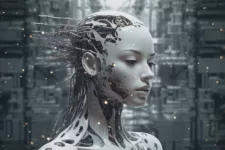Generative AI has hit the world like a storm. Right now, it’s focused in either user tools like what Microsoft has supplied, or customer interactions and general operational assistance like IBM’s watsonx. It is certainly good that both of those companies are focused on using this to enhance us rather than replace us (the actor and writer strike comes to mind). Since I agree that enhancement should be the purpose of these tools, I’ll focus on implementations that make us better, not those that make us obsolete.
Let’s get to it.
Remote employee onboarding
Human resources (HR) units have a serious problem that began back in the 1970s when HR stopped being about providing an alternative to unions by creating better places to work. Instead, they became compliance organizations concerned with keeping the company from being sued. Sadly, for me, that happened right after I got my middle degree in manpower management, a skill set focused on what HR was supposed to be because it made that degree obsolete.
But the pandemic changed a lot of things. With unions once again regaining a foothold, there’s a need for HR to not only return to making their companies a better place to work but to deal with the unique needs of remote employees without having to force them back into the office has become pronounced.
Generative AI could be effectively used to better onboard all employees, but it would be particularly useful for remote workers who are complaining they feel disconnected from their firms. They simply don’t have the contacts, relationships, or face time they need to feel a part of the company, and onsite employees don’t seem to have the time or inclination to engage with them.
Generative AI could be used to not only create a pervasive voice interface for these employees but also to supply an always-available, always-listening assistant that can help them navigate the new firm. And it can do even more. That ‘more’ includes being a relationship service that helps people meet other remote or local co-workers and help them form connections, alert management if an employee is struggling so they can be given timely help, and generally focus on the care and wellbeing of the employee. This could reduce the turnover and unionization problems that firms are dealing with now.
CEO assistant
As I write this, Elon Musk has done something else that is incredibly foolish. He changed the name of Twitter to X, which is already trademarked by both Microsoft and Facebook. It is not going well.
CEOs tend to surround themselves with people who agree with them. They don’t want to hear unwelcome news, yet avoiding a mistake is vastly less expensive than making one. I trained to be a CEO at IBM and learned enough to realize that I never wanted that job. New CEOs are seldom aware of their risks, are poorly mentored, and often make avoidable mistakes.
Yet they cannot really confide in anyone due to insider trading risks, staff envy (everyone wants to be the CEO’s confidant), not knowing who to trust, and generally suffering from a bit too much ego. An AI trained to be a CEO and dedicated to a chief executive could be the confidant that a CEO, particularly a new CEO, could be open with. It could (hopefully) help that CEO avoid mistakes that often kill the companies they manage, or at least walk them through their alternative choices to better choose the best one.
One person in a position of power can make or break a company, and while it would be expensive given how much these folks are paid, it would be a terrific way to assure the CEO investment.
Company spokesperson
People do not interact with companies. Not really. They interact with employees, yet the employees they interact with seldom learn about the customer. When used in advertising, spokespeople are problematic, too, because they are human, and humans make mistakes. Now I said that I was not going to talk about replacing people, but the job of a company media spokesperson is unfilled today.
Even brands like McDonald’s and Jack in The Box have dropped their human representatives because they were just too problematic. You may recall that Dell used a kid in their ads until that kid had a drug problem years ago.
And this role is not good for the person enacting it, either, as they are always on stage or must be on their best behavior constantly, which has turned out to be impossible for humans. So, this is a role that companies shouldn’t try to fill with people but would be perfect for an AI that can scale while a person can’t. An AI can answer the phone or make calls, remember the details of everyone it communicates with, and never get angry or upset, making it a perfect representative of a company brand.
Initial crisis response
People tend to panic when something big, bad, and unexpected happens. They need a calming influence that can help them make rapid decisions to mitigate the damage. Yet when a crisis hits, everyone is so busy running around they don’t have time to stop and think about what the best decisions should be. Crisis plans are forgotten, particularly if the people who wrote them are no longer with the company, and people are put at risk by conflicting directives, bad decisions, and people that act without forethought.
Generative AI does not panic, it can be triggered by an event, and it can provide near-instant relevant vocal guidance on what to do. Take the example of an active shooter tied into the building security system. AI can direct people away from the danger rather than a typical evacuation which may have people running towards a shooter.
Building on products like BlackBerry’s AtHoc, AI could do a far better job of keeping employees safe and assuring that whatever can be done to protect both the site and the people in and around it is done. It can step in for missing or lost critical information and decision-making resources and better assure the outcome for almost any unplanned event by aggregating the information from similar events both at the company and all over the world.
Freedom
As with most of you, I have been watching the writers’ and actors’ unions go on strike partially because of fears generative AI will take their jobs. But were they to use generative AI, these creatives could form smaller companies and move around the studios to make their own content and better control their own destinies. I used to be an actor. You rarely get the roles you really want, writers’ scripts (even good ones) often go unpurchased, and the result is that much of the creativity that industry could use is lost. With the generative AI tools out there now, you can create ever more professional-looking content with fewer people, leaving the truly creative people the freedom to forge their own path away from the studios and their convoluted, biased staffing and creative process.
For people who want to follow their dream, generative AI will increasingly supply a way to explore their muse, seek out new opportunities and go where they only dreamed of going before. Why be a part of someone else’s dream when you have the potential to make your dream real? Generative AI doesn’t have to be a threat. It can be an enabler so that the project you imagine can become real whether it is just a proof of concept, pilot, or a complete movie. These tools could change the lives of those that use them and give artists the freedom to dream, create and produce content like never before and give the rest of us access to a level of content diversity never seen in the world before or since.
Wrapping up:
Generative AI is a potential game-changer. To be most effective, it needs to focus on where it is needed most, like remote employee onboarding, CEO aid (Elon Musk really needs this), company spokesperson, crisis response, and supplying the freedom for creators to truly create.
Perhaps focusing AI on helping those that most need it is the path that we should be on. Here’s hoping some of you find your own path with this amazing technology.








